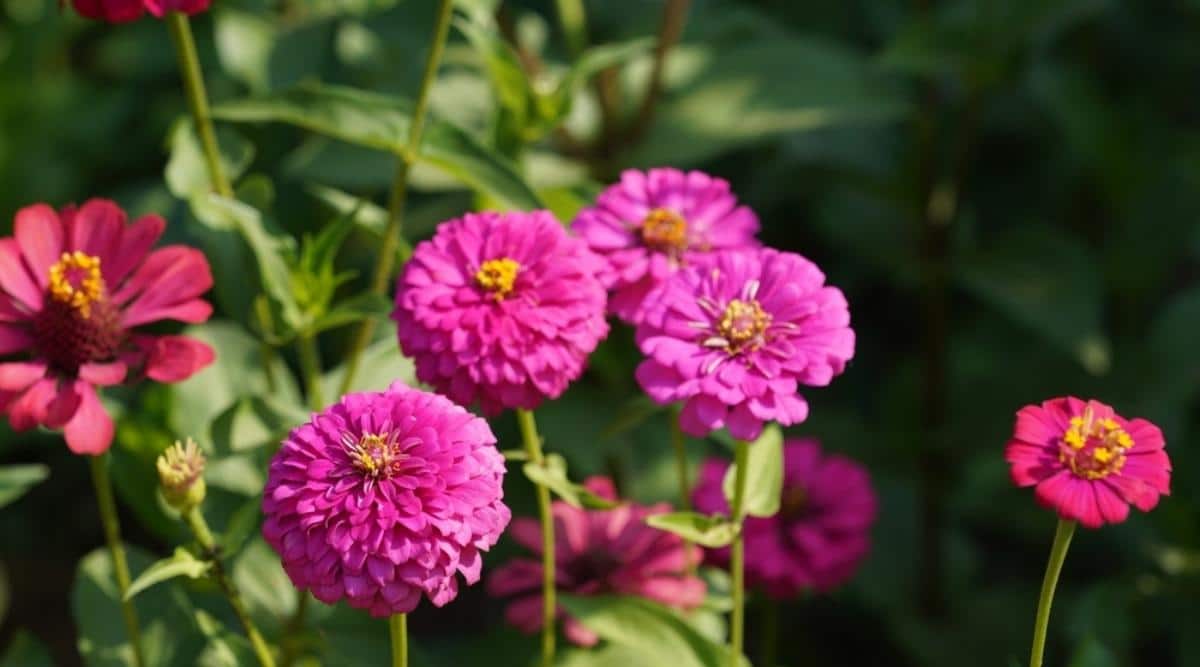sierra-barter.com – The Common Zinnia (Zinnia elegans) is a vibrant and hardy flower that has become a favorite among gardeners worldwide. Known for its striking colors and ability to thrive in various conditions, the zinnia is a symbol of resilience and beauty, making it a popular choice for both seasoned horticulturists and beginners.
Description and Features
The Common Zinnia is an annual flowering plant that typically grows between 12 to 36 inches tall, depending on the variety. It has a bushy, upright growth habit with bright, lance-shaped leaves. The flowers are the most notable feature of the zinnia, blooming in a wide range of colors including red, pink, orange, yellow, white, and purple. The blooms can be single or double, with a daisy-like appearance and a central disk surrounded by colorful petals.
Zinnias are known for their long-lasting blooms that can remain vibrant throughout the summer and into the fall, adding continuous color to gardens and landscapes. Their ability to resist disease and pests further enhances their appeal for both ornamental and functional gardening.
Habitat and Distribution
Native to Mexico and parts of Central America, the Common Zinnia has become widely cultivated in many regions around the world. It thrives in warm climates and prefers full sun and well-drained soil. Zinnias are well-suited for garden beds, borders, and container planting, making them versatile flowers that can fit into a variety of garden designs.
The plant is relatively low-maintenance and can tolerate drought conditions once established, making it an ideal flower for areas with hot summers and minimal rainfall. Zinnias are often used in flower beds, cutting gardens, and as border plants, where their bright colors can provide visual interest.
Ecological Importance
Zinnias play a valuable role in supporting local ecosystems by attracting a variety of pollinators, including bees, butterflies, and hummingbirds. These pollinators are essential for the health and reproduction of many other plants in the garden. Zinnias’ bright colors and easy accessibility make them a reliable source of nectar and pollen for these beneficial insects.
In addition to their role in pollination, zinnias are known to support a healthy garden environment by attracting other beneficial insects while deterring certain pests. Their resilience and pest resistance make them a popular choice for gardeners looking for low-maintenance, yet effective, flowers for their landscapes.
Cultivation and Care
Growing zinnias is relatively easy, making them an excellent choice for novice gardeners. They prefer full sunlight and should be planted in well-drained, slightly acidic to neutral soil. Zinnias are relatively drought-tolerant once established, but they still benefit from regular watering, especially during dry spells. Deadheading spent flowers will encourage the plant to produce more blooms, extending the flowering season.
One of the key advantages of zinnias is their resistance to many common garden pests and diseases, particularly powdery mildew. However, it is still important to ensure they are spaced properly to promote good air circulation, which helps prevent any potential fungal issues.
Symbolism and Cultural Significance
Zinnia flowers are often associated with endurance, lasting love, and remembrance. Their ability to thrive in a variety of conditions has made them a symbol of resilience and strength. In some cultures, zinnias are given as gifts to convey feelings of enduring affection and admiration.
Additionally, zinnias have found their place in floral arrangements and celebrations, bringing cheer and vibrancy to events and festivities. The flowers’ bright colors are often used to convey happiness and positivity, adding a sense of joy to any occasion.
Conclusion
The Common Zinnia is much more than a beautiful flower—it is a hardy, resilient plant that thrives in various garden settings and climates. With its striking colors, ability to attract pollinators, and low-maintenance care requirements, the zinnia is a must-have in many gardens. Whether you’re growing them for their visual appeal, their ecological benefits, or their symbolism, the zinnia continues to shine as a beloved addition to gardens worldwide.
